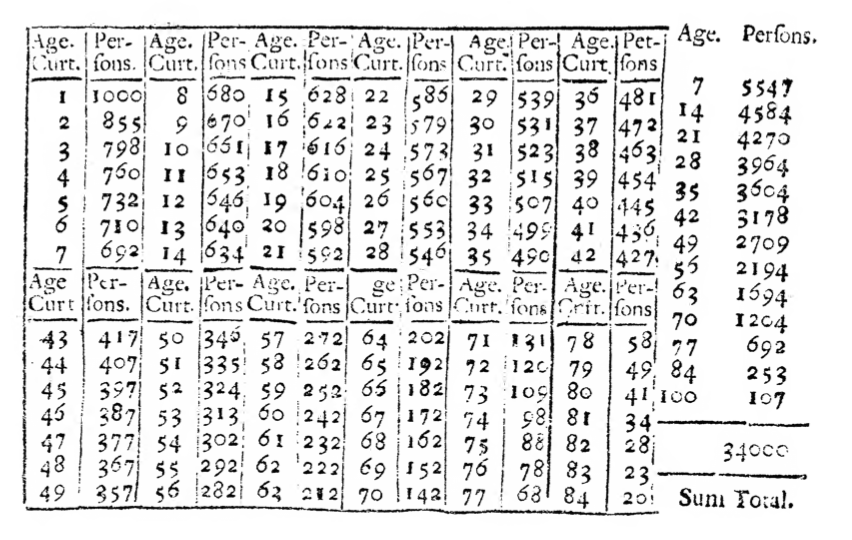theme: insurance
same_person
Halley Life Table
1693

In general, mathematicians all over Europe were quick to recognize the relevance of mortality tables like John Graunt’s to extensions of probability theory beyond gambling, and in 1693 Edmund Halley published the first truly empirical mortality table, compiled from the data gathered by the Protestant pastor of Breslau at Leibniz’ instance.
(Gigerenzer et al. 1990, p.20)From these Considerations I have formed the adjoyned Table table, whose Uses are manifold and give a more just Idea of the State and Condition of Mankind, than any thing yet extant that I know of. It exhibits the Number of People in the City of Breslaw of all Ages, from the Birth to extream Old Age, and thereby shows the Chances of Mortality at all Ages, and likewise how to make a certain Estimate of the value of Annuities for Lives which hitherto has been only done by an imaginary Valuation : Also the Chances that there are that a Person of any Age proposed does live to any other Age given ; with many more, as I shall hereafter show.
(Halley, 1693, p.600)Gigerenzer, G., Porter, T., Swijtink, Z., Daston, L., Beatty, J. and Kruger, L. (1990) The Empire of Chance. Cambridge University Press.
Halley, E. (1693) ‘An Estimate on the Degrees of Mortality of Mankind, drawn from the Curious Tables of the Births and Funerals at the City of Breslau; with an Attempt to Ascertain the Price of Annuities upon Lives’, Philosophical Transactions of the Royal Society, 17, pp. 596–610. [link]
theme: insurance
same_person